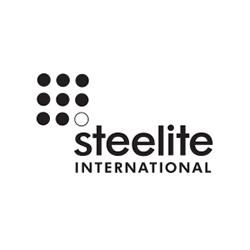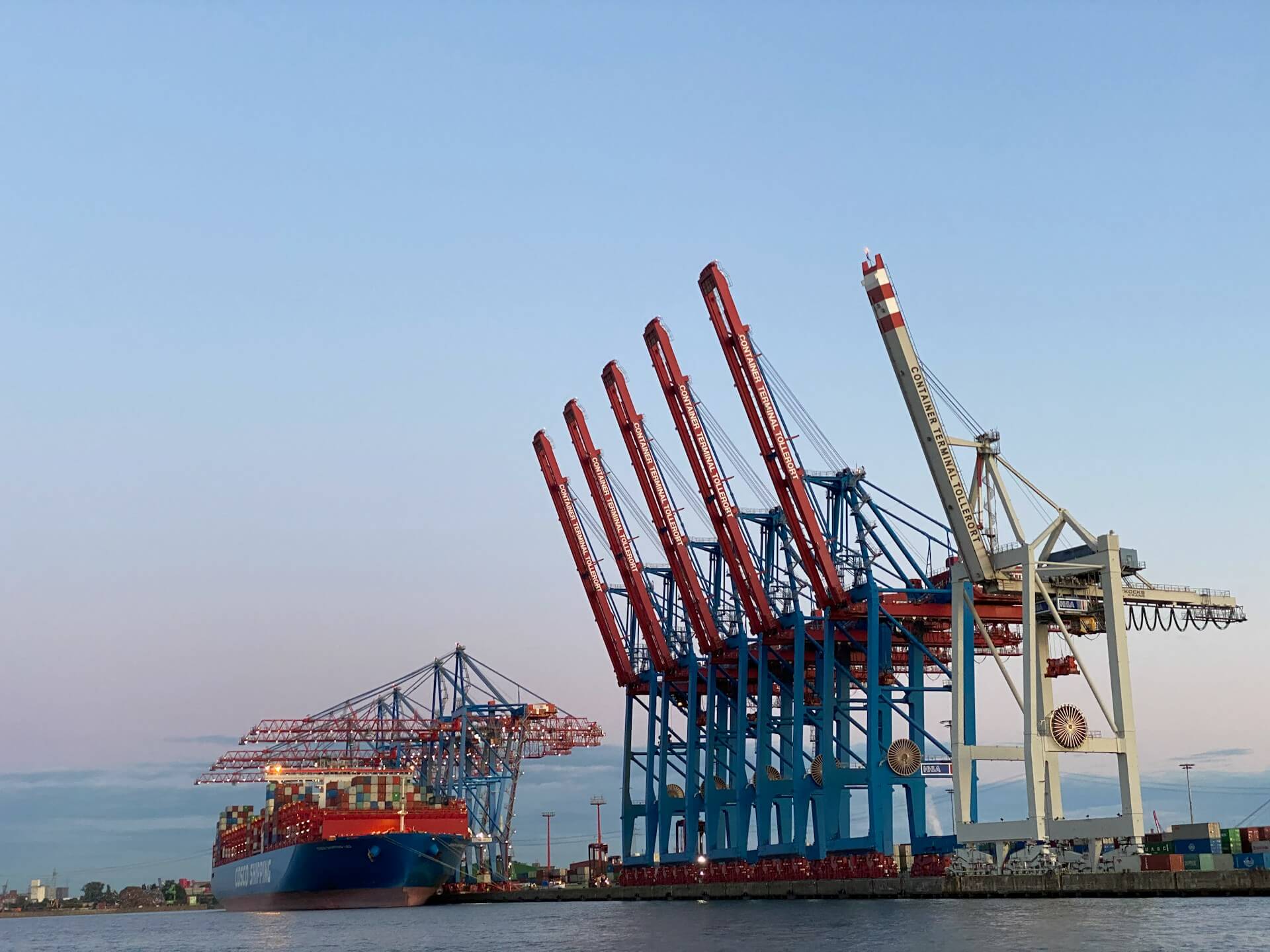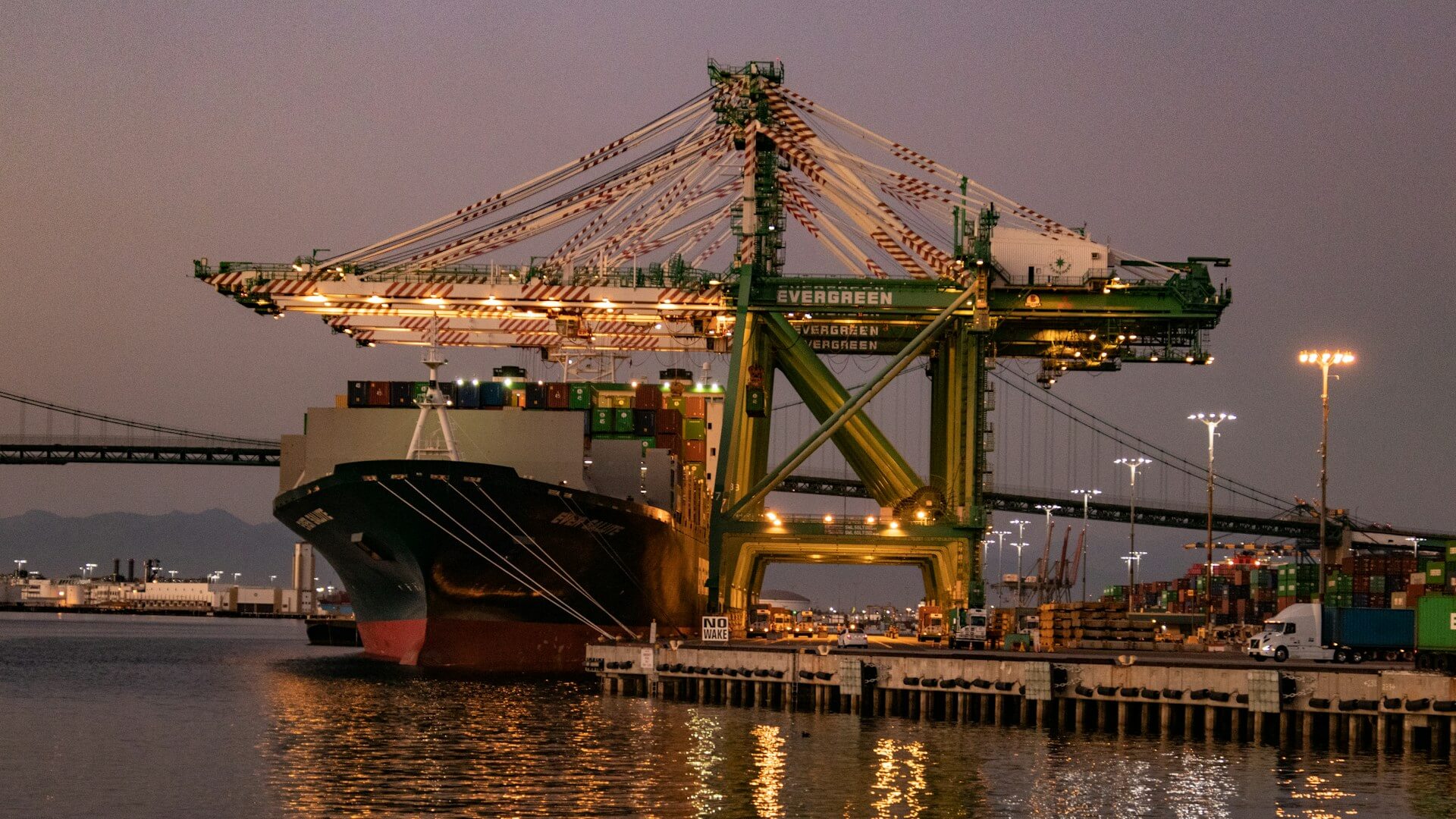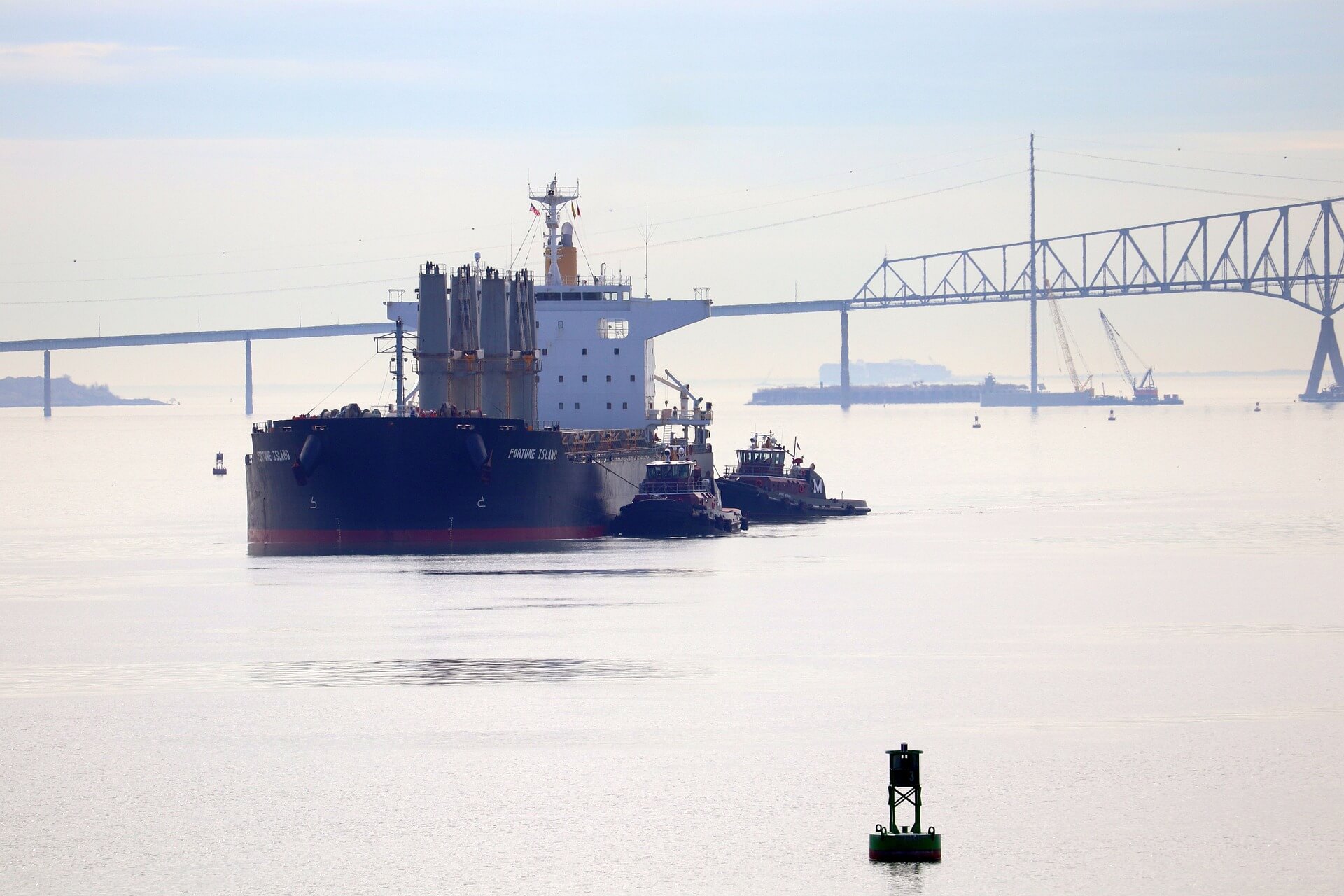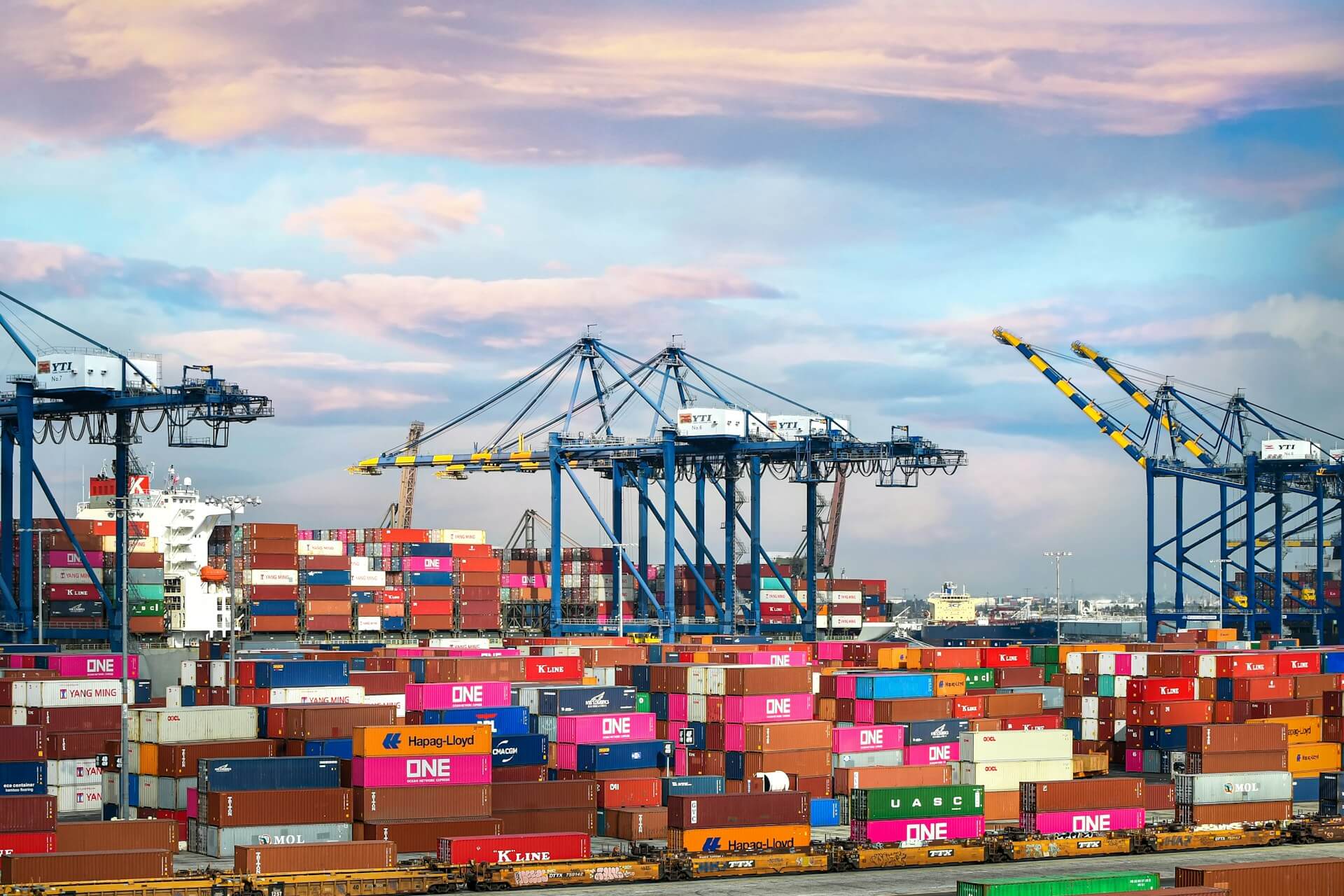This week:
- Ocean carriers move to slow steaming practice to help absorb extra capacity
- May saw fewer blank sailings on the trans-Pacific than in the previous month
- NITL and other groups continue to push for FMC oversight in rail storage fees
- NY-NJ stakeholders work to improve trucker experience amid cargo downturn
- Trailer dislocation continues to be a problem for truckers even after the height of the pandemic
Increasing Surplus Capacity Pushes Carriers to Implement Super Slow Steaming
As increasing ocean capacity outpaces growth in global ocean shipping demand, a pattern that will continue through 2024, ocean carriers have begun to employ a practice known as super slow steaming. Super slow steaming is used to absorb ocean capacity, last used on a large scale in the 2008 global financial crisis.
In April this year, container ships sailed on average 3.4% slower than in April 2019, with the global container fleet growing by 16.9% across this period. Looking forward, analysts predict that ocean capacity will grow by approximately 4% this year while demand will only grow by 2%. In 2024, capacity is expected to increase by 7%, outpacing the 3% increase in demand. New capacity continues to flood the ocean market, meaning carriers are incentivized to employ slow steaming much more over the coming months.
Sign up to Receive JMR’s Supply Chain News Roundup, Delivered Directly to Your Inbox Weekly
Carriers Blank Less Sailings as the Ocean Freight Rate Levels Out
In an attempt to boost spot rates, carriers in April blanked numerous trans-Pacific services in order to improve spot rates amid growing capacity rates. In May, however, carriers reduced the number of blanked sailings and were more likely to change weekly services to biweekly services.
According to a Journal of Commerce review, carriers blanked 32 trans-pacific services accounting for 285,655 TEU in May. In comparison, April saw 46 blanked sailings, accounting for 416,350 TEU. General Rate Increases (GRIs) also came into effect in April on the trans-Pacific, making shippers book more space and increasing vessel utilization while flatlining spot rates.
According to Drewry’s World Container Index, spot rates from Shanghai to Los Angeles have stabilized, with April’s average rate of $1,856/FEU seeing little change in May when on the 18th, it was $1,823. Shanghai to New York saw minimal change as well, going from $2,849/FEU in April to $2,825 in May.
NITL Joins Push to Give FMC Oversight over Rail Storage Fees
The National Industrial Transportation League (NITL) is lending support with a push to give the FMC oversight over rail storage fees and that the fees should be considered as part of “through” transportation under ocean bills of lading. Shippers are becoming more frustrated because neither the FMC nor the Surface Transportation Board (STB) has regulatory authority over the charges.
The NITL has joined the National Shippers Advisory Committee (NSAC) in asking the FMC to update its detention and demurrage rules in order to have more power over rail fees. Should the FMC gain oversight over the charges, rail storage fees would then fall under the requirements set out by the Ocean Shipping Reform Act 2022 (OSRA22), meaning carriers would receive rail storage bills rather than shippers.
So far, more than 70 groups with shipping interests have written letters to the House Transportation and Infrastructure Committee asking that the FMC is given oversight for rail storage fees assessed against ocean containers moving on through bills of lading.
NY-NJ Cargo Downturn Prompts Stakeholders to Improve Trucker Experience
Recent drops in cargo volume at the port of New York-New Jersey have left the port’s truckers with fewer containers to move. Year-over-year in March, import volumes to the port dropped by 35.4% to just 286,142 TEU, the lowest level since June 2020. In that same period, the number of new truckers to the port had risen by 15% to a total of 11,286.
In a bid to improve trucker experience at the port so that more truckers stay and are available for when cargo volumes pick up again, the Port Authority of New York and New Jersey (PANYNJ) is starting a number of projects to make navigating the port much easier. PANYNJ plans on improving traffic signaling and signage, line striping and lighting, and building more restroom facilities around the port.
Terminals are also providing their truckers with better information services, like the Maher Terminals’ Live Entry Pass that gives truckers specific instructions on where they need to go in the terminal. Truckers are also being given real-time updates on when straddle carriers will arrive to move a container on or off their vehicle.
US Truckload Carriers Are Still Dealing with Trailer Dislocation Caused by the Pandemic
The height of the pandemic saw significant strain on truckload carriers due to trailer dislocation as more trailer capacity was moved outside of optimal locations in order to move cargo, with carriers having to spend additional resources to reposition those trailers, and in some cases, they have had to reject loads in favor of repositioning trailers.
The problem of trailer dislocation continues today as shippers in different sectors slow down or speed up their shipment velocities, forcing carriers to move trailers farther outside of their preferred lanes. In response to the issue, transportation marketplace technology provider vHub is working on a new platform designed to facilitate “load-outs” where carriers reposition trailers while simultaneously moving cargo from another party.
The diversion of discretionary cargo away from the West Coast has led to many importers of Asian-made goods favoring ports in the Southeast, Savannah in particular. 2022’s Asia import volume only decreased by 0.3% after 2021’s 13.5% spike, however, the Southeast’s market share rose by 1.1% from 19.8% to 20.9% between these two years, a 5.2% volume increase, while the West Coast’s market share dropped from 59.9% to 56.4%.
Savannah led the Southeast ports with a market share increase of 0.7% to an 11.1% total, increasing the port’s import volume by 6.1%. Charleston followed suit with a market share increase of 0.5% to a market share of 3.8% after a 14.6% spike in shipment volume.
Although it remains to be seen whether the Southeast will maintain its market share after ILWU contract negotiations finish, the Southeast ports are a gateway to North and South Caroline, Georgia, Tennessee, and Florida. And as Southeastern ports get more upgrades and improved supply chain infrastructure investments, shippers may prefer to send imports from Asia directly to the Southeast ports rather than to the West Coast, where they must make the intermodal journey across the country.
(Image source: Ian Simmonds | Unsplash)

